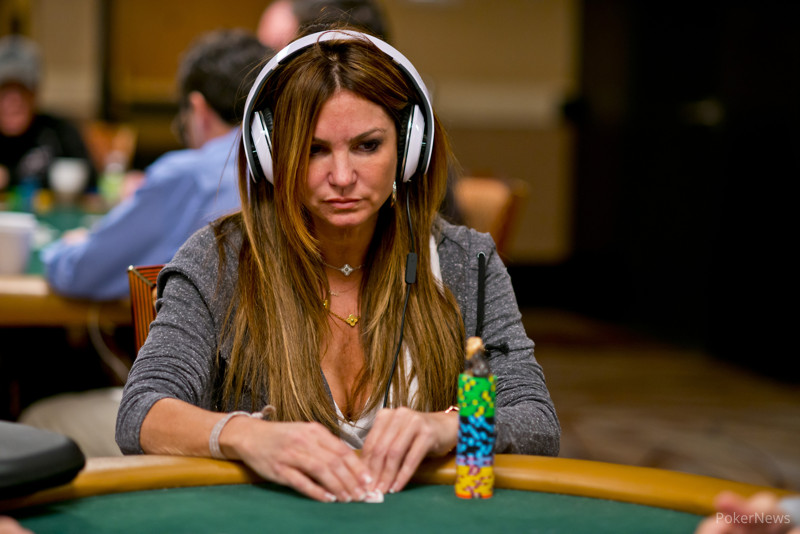Some examples of uncertain verbal behavior:
- Small expressions and utterances like “uhh” or “umm”, either on their own or accompanying other speech
- Sighing
- Statements expressing uncertainty (e.g., “You might have me, but I guess I’ll go all-in.”
- Questioning (upward-inflected) tones
- Sad tones of voice
For a lot of types of behavior, the most valuable application will be when that behavior is seen from a player making a significant bet. This is because players making significant bets are under different stressors than players in other, less significant situations. For example, a player making a big bluff, as we’ve said, doesn’t like to make weak-hand statements. That’s one example of how behavior is more meaningful and reliable when applied to players betting (as opposed to non-betting, non-aggressor players).
Hesitation and uncertainty are mainly the same; they will mainly be relevant information when exhibited by a player making a significant bet. Here’s the general rule:
Players who express uncertainty or concern before, during, or after making a significant bet will generally have strong hands. There are two main reasons for this pattern:
- Players betting weak hands want to seem confident, so are unlikely to express uncertainty or concern.
- Players betting strong hands will sometimes put on a false show of uncertainty or concern, in an attempt to get a call.
Let’s look at some real hand examples now.
$1-2 NLHE cash game
On a river board of A♥ 6♦ 2♦ 9♣ A♦, a player bets $30 into a $50 pot.
An opponent thinks for a while and then says, in a slightly worried way, “You have the flush?” He then raises to $90.
If this player were bluffing it’s unlikely he’d express any concern about his opponent’s hand strength.
Results: The first bettor calls the raise with a flush. The raiser has 2♠ 2♣, for a full house.


2007 WSOP NLHE Circuit Event tournament
Brett Richey raises to 80,000. Beth Shak looks at her cards and makes shrugging gestures.
She says, “I raise” while continuing to make shrugging gestures, as if uncertain what to do.
Then she says, “Umm… I’m all-in” while shaking her head and making more animated shrugging gestures.
Just as with the last hand, this player’s “umm” makes it likely she’s relaxed.
Results: Shak has A♥ A♦.
Poker After Dark, high stakes NLHE cash game
On a river board of A♣ J♦ 2♦ Q♠ 6♥, Dee Tiller checks and Gabe Kaplan thinks for a while.
Kaplan bets, saying, “Uhh, twenty-one thousand.” The pot is $27,800.
Again, “uhh” and “umm” utterances when betting make strong hands more likely.
Results: Kaplan has K♣ T♦ for the nut straight.


PokerStars.com The Big Game, high stakes NLHE cash game
(This hand previously discussed.) On the river, the board is K♥ 4♥ 3♠ 4♠ 8♦. Daniel Negreanu has 6♣ 5♦. Negreanu bluffs $16,500 into a $17,600 pot.
Gonzalo Cannon looks disappointed and says, “Wow, big blind, big blind, big blind, big blind, big blind…” as if worried about what hand Negreanu, in the big blind, might have.
Negreanu trickily shows Cannon a card to induce a fold. But Cannon then raises
Results: Negreanu folds. Cannon has 4♥ 3♣ for a full house. He was feigning worry to trick Negreanu.
This was an obvious example of feigned concern. Most players won’t make their act of concern this obvious because it’s such a well-known tell of strength. (This is why Negreanu thought this player had a call-or-fold decision.)
2013 WSOP NLHE Main Event tournament
Jay Farber raises pre-flop to 330,000. Mark Newhouse is on the button. Newhouse moves his chip stack over so that the table camera can see his hole cards.
Farber remarks on Newhouse moving his chips, saying, in a slightly joking voice, “Got worried for a second when you grabbed all the chips.”
Newhouse (laughs): “Yeah.”
Farber: “Like—what’s going on here?”
Newhouse: “Gotta get it over the hole card cam.”
Newhouse 3-bets to 730,000. Farber 4-bets to a little over 2M.

Results: Newhouse has 4♥ 4♣ and folds. Farber has A♣ K♣.
If Farber actually had a vulnerable hand, he’d be unlikely to make a statement of concern about Newhouse grabbing his chips, even in a joking way. After making such a statement of concern, he’d also be unlikely to 4-bet if he had a weak hand.
Practical Application
The practical application is in being able to more accurately assign strength to players who express uncertainty and hesitation in their speech.
This, as we’ve said, mainly applies to players making significant bets. It can often be valuable for players who are considering calls; it’s just less reliable as information. You should start to be wary and analytical whenever an opponent puts on any kind of act of uncertainty or hesitation, in any situation. You should start asking yourself the question, “Why is this player acting this way? What could be the reasons why he’d express some uncertainty or concern in this situation?”
Sometimes, for non-aggressors, it will actually be genuine uncertainty, which is why this behavior is less meaningful for them. But many times, for them (especially when they end up betting or raising after said uncertainty) the uncertain behavior was a sign that they weren’t actually uncertain.
The point is to think about the situation and try to come up with plausible reasons for what the reasons behind the behavior might be.
src: readingpokertells.com

